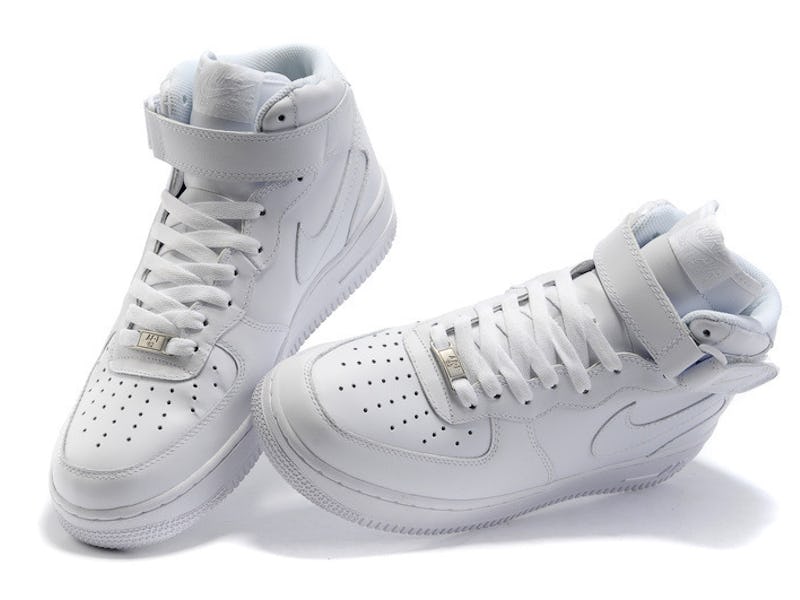What Exactly Is the 'Air Technology' in Nike's Air Force 1s?
Meet the most coveted viscoelastic bag full of air on the planet.

Nike is gearing up to re-release its Air Force 1 basketball shoes, which sneakerheads know as the first basketball shoes to house Nike’s proprietary “Air Technology” within their soles. Back in 1987, Nike Air was just a beautiful idea to make “footwear with adjustable viscoelastic units.” No one — aside from maybe a U.S. Patent Office clerk — knew what would happen next.
Viscoelasticity combines the shear-resisting flow of viscous materials (think: molasses’ slow pour) with the elastic ability to return to an original form (think: rubber). The goal in Nike’s case, as outlined in the patent, was “attenuating shock and returning energy of foot impact.”
The air bit comes into play thanks to a “gaseous medium,” inflating the sole to the sweet spot on the toughness-to-flexibility ratio. The best gases available in 1987: Hexafluoroethane and sulfur hexafluoride. It wouldn’t be until the 2000s that the gases were replaced with greener nitrogen (putting the actual air in Air).
But does Nike’s shoe tech actually pump you up?
That’s a 25-year-long biomechanics debate though the evidence points to no. Reduction of energy loss is one thing, but the idea that energy can return to an athlete thanks to a cushion, as kinetics experts Benno Nigg and Bernhard Segesser wrote in 1992, is bunk.
That’s not how physics works. Still, the shoes are sweet.